Designing parts without thinking about how they’ll be made can cause big problems. You might face high costs, long delays, and poor quality. Imagine your great idea gets stuck, or it’s too expensive to produce. DFM, or Design for Manufacturability, helps you avoid these issues.
Design for Manufacturability (DFM) in manufacturing is a core engineering practice. It focuses on designing products so they are easy and cost-effective to produce. This means thinking about manufacturing processes, materials, and equipment right from the start. The goal is better quality, lower costs, and faster production times.
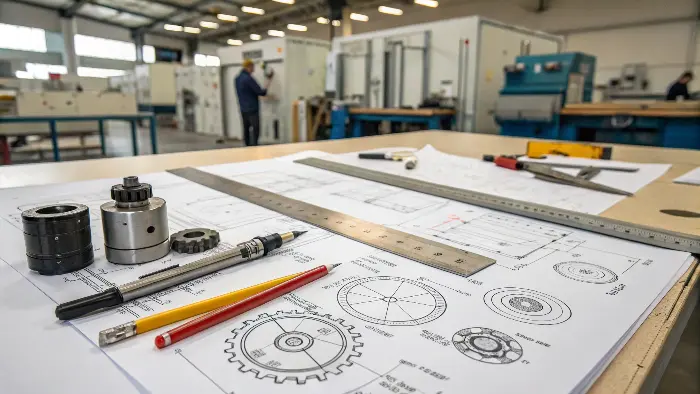
Now that we have a basic idea of DFM, you might be wondering how it actually works in practice. It’s more than just a buzzword; it’s a systematic approach that can really change how you develop products. Let’s look closer at what DFM means for engineers and production teams, and how it fits into the bigger picture.
What does DFM stand for in engineering?
Engineers often focus hard on making a part work perfectly. Sometimes, they might not think enough about how that part will actually be built. This can create designs that look amazing on a computer screen but are very hard or expensive to make. Knowing what DFM means helps engineers create designs that are both smart and practical.
In engineering, DFM stands for "Design for Manufacturability." It’s a key idea that tells engineers to create product designs that are simple and cheap to make. This involves using common manufacturing methods and tools whenever possible. It helps make the whole process smoother.
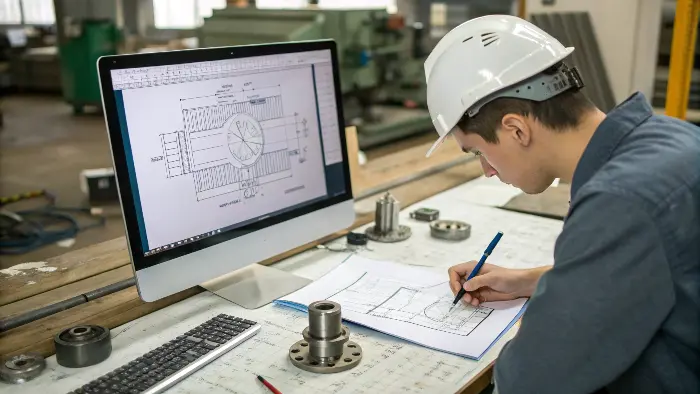
DFM is really about thinking ahead. It’s a proactive step in the design stage. Instead of waiting for problems to show up on the factory floor, engineers consider manufacturing limits early on. The main aim is to cut down on complexity. This, in turn, reduces costs and speeds up the time it takes to get a product to market.
Why DFM is Key for Engineers
For an engineer like Alex, who designs precision components, DFM is vital. It directly impacts how successful a project will be. When DFM principles are used, there are fewer needs for big design changes later. This saves a lot of time and money. It also means engineers can work better with manufacturing teams. I remember one project early in my career. An engineer designed a very complex part. It looked great in the CAD software. But when we tried to machine it, the setup took ages, and we broke several cutting tools. A bit of DFM thinking at the start would have saved us days and a lot of money. We had to simplify things, like changing sharp internal corners to rounded ones, just to make it machinable. This is a common story, and DFM helps avoid it.
What does DFM mean in production?
Production teams often get designs that are tough or almost impossible to make well. This can cause big headaches on the factory floor. It leads to delays, more wasted material, and unhappy workers. When production teams understand DFM, it means they get designs that are ready for smooth and low-cost manufacturing.
In production, DFM means getting designs that are already set up for the factory’s tools, machines, and materials. This leads to fewer problems during making, faster work, lower costs, and better quality products. It makes the whole production line run better.
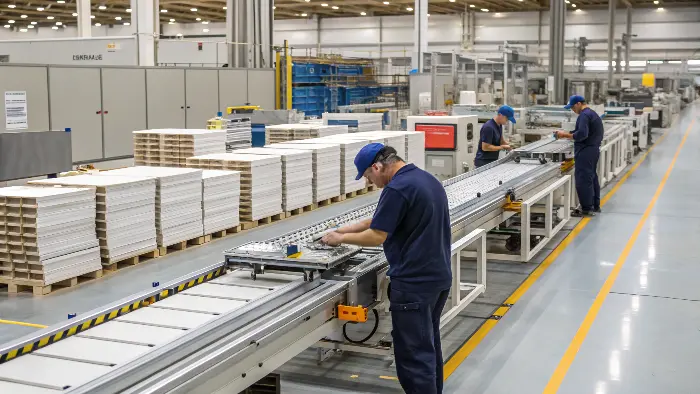
From the view of the shop floor, DFM is all about being practical. It’s about making things easier. For example, a design that follows DFM might use standard tools instead of special, expensive ones. It might also mean fewer steps to set up a machine. This directly affects how quickly parts can be made.
DFM’s Impact on the Factory Floor
When I worked in a CNC shop, a design that clearly considered DFM was great to work on. We could set up machines faster. We could use the tools we already had. We could make parts that were consistently good. But when a design ignored DFM, it was a constant fight. We often had to make custom fixtures. Or we had to do many machine operations when one or two should have been enough. This directly impacts how quickly we at QuickCNCs can deliver parts to clients like Alex. Good DFM also helps in choosing the right materials. It can reduce how much material is wasted. This is good for costs and for the environment. For production teams, DFM means fewer mistakes and less rework. This improves how much they can produce and makes their jobs easier.
What is the DFM process in manufacturing?
Knowing that DFM is important is one thing. But how do you actually do it? If you don’t have a clear process, your DFM efforts might not work well. You might not get the good results you want. Understanding the DFM process gives you a clear, step-by-step way to build manufacturability into your design work from the start.
The DFM process in manufacturing is a careful review of a product’s design. The goal is to find and fix possible manufacturing problems early. It usually includes steps like choosing the right materials, picking the best manufacturing methods, making the design simpler, and checking tolerances.
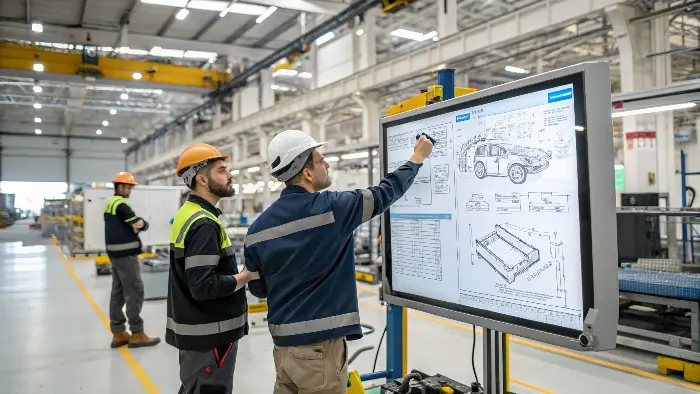
The DFM process isn’t just a single checklist; it’s a way of thinking that should be part of the entire design journey. It starts from the very first concept and continues through to the final production plans.
Key Steps in a Typical DFM Process
Here are some common steps involved:
- Early Teamwork: Get manufacturing engineers involved right from the beginning. Their input is very valuable.
- Know Your Limits: Understand what your manufacturing setup can and cannot do. This includes machines, tools, and worker skills.
- Material Choice: Pick materials that are easy to work with and don’t cost too much. Also, think about availability.
- Process Choice: Try to use standard and efficient manufacturing processes. For example, for us at QuickCNCs, this means optimizing for CNC machining.
- Simplify the Design: Look for ways to reduce the number of parts. Make the shapes simpler. Use standard components if you can.
- Tolerance Check: Make sure the tolerances (the allowed variations in size) are not too tight. Very tight tolerances can make parts much more expensive to produce. Only specify them where they are truly needed for function.
- DFM Reviews: Have regular meetings or use checklists to formally review the design for manufacturability.
At QuickCNCs, when we get a design, our DFM process is a very important first step. We don’t just look at the drawing. We think about how each feature will be machined. For instance, we check for deep pockets that might need special long tools. We look for internal sharp corners that a round cutting tool cannot make. We then give feedback to the client, like Alex. We might suggest small changes that can cut machining time and cost a lot, without changing how the part works. This teamwork in the review is key.
Here’s a simple table showing some DFM guidelines for CNC machining:
| Feature | DFM Guideline for CNC Machining | Why this is important? |
|---|---|---|
| Internal Corners | Use radii (e.g., radius >1mm if possible) | Cutting tools are round, they can’t make sharp corners. |
| Hole Depths | Keep length-to-diameter ratio low (e.g., <8:1) | Deep holes can cause tool breakage and chip problems. |
| Wall Thickness | Avoid very thin walls | Thin walls can bend or break during machining. |
| Tolerances | Specify only where absolutely critical | Tighter tolerances always mean higher costs. |
| Material Selection | Choose grades known for good machinability | Easier to machine, faster, better surface finish. |
What is DFA and DFM?
You might hear people talk about DFA and DFM together. It can sound a bit confusing. If you don’t know the difference, you might miss important ways to make your product better and cheaper. Understanding both DFA and DFM, and how they connect, helps you create a product that is truly well-designed for its whole life.
DFA stands for Design for Assembly. It focuses on making a product easy to put together. DFM, which is Design for Manufacturability, focuses on making the individual parts of that product easy to produce. Both are very important for the total cost and quality of a product.
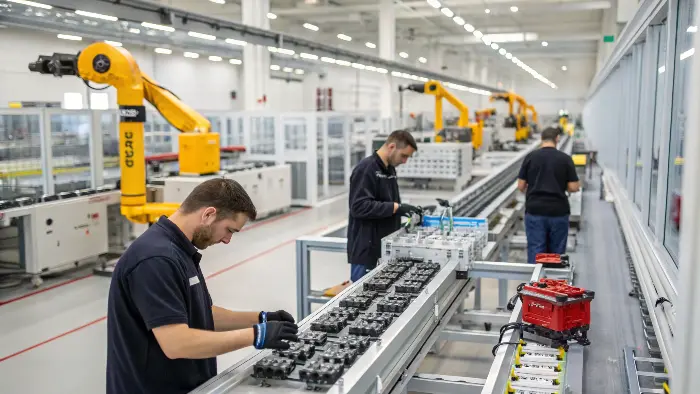
While DFM looks at individual components, DFA looks at the bigger picture of how those components come together. Both aim to reduce costs and improve quality, but they tackle different stages.
Understanding DFA (Design for Assembly)
The main goal of DFA is to make the assembly process faster, easier, and cheaper.
Key ideas in DFA include:
- Reducing Part Count: Fewer parts usually mean less assembly time and fewer chances for errors.
- Easy Handling: Design parts that are easy to pick up, orient, and insert. Avoid parts that are too small, too flimsy, or tangle easily.
- Standard Fasteners: Use common screws, bolts, and clips. This simplifies inventory and tooling.
- Mistake-Proofing (Poka-Yoke): Design parts so they can only be assembled in the correct way.
How DFA and DFM Work Together
DFM and DFA are like two sides of the same coin. DFM helps us at QuickCNCs make a perfect gear efficiently. DFA helps our client, say an engineer like Alex, easily put that gear into his robotic arm with other parts. If the gear is easy to make (good DFM) but very hard to install (poor DFA), the overall product still has problems. That’s why thinking about both is so important. I’ve seen cases where a part was beautifully machined, but its design made it incredibly tricky to install. This added hours to the assembly line and increased costs.
Often, DFM and DFA are combined into something called DFMA, which stands for Design for Manufacture and Assembly. This approach looks at optimizing the entire system, from raw material to finished, assembled product.
Here’s a table to compare them:
| Aspect | DFM (Design for Manufacturability) | DFA (Design for Assembly) |
|---|---|---|
| Main Focus | Making individual parts | Putting all the parts together |
| Goal | Easy and low-cost part production | Easy and low-cost product assembly |
| Concerns | Material, process, tools, part shape | Number of parts, handling, insertion, screws |
| Example | Simplifying a machined housing design | Reducing screws needed in an enclosure |
By applying both DFM and DFA principles, companies can significantly improve their products and their bottom line.
Conclusion
In short, DFM is about designing smart from the start. It helps make parts easier and cheaper to produce, leading to better quality and faster delivery. When combined with DFA, it ensures the entire product is optimized. At QuickCNCs, we live by these principles to help you succeed.


